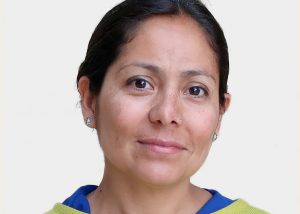22 January 2020
PLEASE NOTE: The Viewpoints on our website are to be read and freely shared by all. If they are republished, the following text should be used: “This Viewpoint was originally published on the REVIVE website revive.gardp.org, an activity of the Global Antibiotic Research & Development Partnership (GARDP).”
Gonorrhoea and chlamydia are the two most common sexually transmitted infections (STIs) in the world, with a staggering 214 million new cases occurring in 2016 alone.1 While anyone having unprotected sex is at risk, both diseases disproportionately affect sex workers and their clients, and men who have sex with men. Today, we have the means to treat both diseases, but the emergence of so-called ‘super-gonorrhoea’ is of great concern in the global battle against antimicrobial resistance.
At the heart of the problem is that the symptoms of gonorrhoea and chlamydia are very similar, making it challenging for healthcare professionals to differentiate between the two infections and thus treat appropriately. Further, around half of those patients with gonorrhoea do not experience symptoms and those who do may be unlikely to seek medical care, which contributes to the spread of the disease.
The use of accurate diagnostic tests can ensure that new antibiotics are used only when and where needed.
There is a diagnostic test to identify both pathogens. But with a high price, long time-to-result (around 90 minutes, which can take a day or more to be communicated back to the patient if the test is conducted in a centralized laboratory), and the need for trained staff and well-equipped laboratories, many resource-constrained countries cannot implement it in their day-to-day practice. In 1990, lack of an optimal diagnostic test led the World Health Organization (WHO) to recommend a syndromic approach to treatment (i.e. basing patient-management decisions on symptoms alone), even though this approach cannot reliably identify gonorrhoea or chlamydia every time. The result is misdiagnosis in 4 cases out of 5.2 In the absence of a definitive diagnosis, two antibiotics are usually prescribed to cover both infections. However, at least one drug (or both) may be inappropriate, and this unnecessary use will contribute to the emergence and spread of drug-resistant gonorrhoea.
Resistance to treatments for infections by Neisseria gonorrhoeae, began to emerge shortly after the introduction of antimicrobials at the beginning of the 20th century, and resistance has now developed to every antimicrobial treatment that has been since introduced.1 The trend towards decreased susceptibility and increased numbers of strains resistant to cefixime and ceftriaxone – the last line of antibiotics available today – is particularly worrying. Such strains, dubbed ‘super-gonorrhoea’, have been isolated from patients in the UK, France and Australia. However, lack of robust surveillance systems in resource-constrained settings, such as in areas of Africa and South-East Asia, means the total number of drug-resistant strains remains unknown.
The diagnostic and the drug(s) must both be readily available to all people with gonorrhoea wherever they seek care.
New drugs are urgently needed to avert an unstoppable epidemic of untreatable drug-resistant gonorrhoea. But any new drug will only last for so long before N. gonorrhoeae evolves to become resistant. New antibiotics need to be handled with extreme care to keep them as effective for as long as possible. How? The use of accurate diagnostic tests can ensure that new antibiotics are used only when and where needed.
GARDP and Entasis Therapeutics are co-developing zoliflodacin, a new antibiotic that is currently under investigation in a phase 3 clinical trial to treat uncomplicated gonorrhoea. To safeguard this new drug, effective diagnosis is essential – ideally through a rapid and accurate diagnostic test. FIND is working closely with GARDP, supported by the UK government’s Global AMR Innovation Fund (GAMRIF) and in collaboration with WHO, to develop a rapid, low-cost diagnostic that can diagnose both gonorrhoea and chlamydia infections.
The diagnostic – and the drug(s) – must both be readily available to all people with gonorrhoea wherever they seek care. National health systems, particularly in resource-constrained settings, must therefore include STI care at the primary healthcare level. Currently, delivery of STI services is not included in the agenda of any funding body, making it challenging for countries to ensure access to these services. Successful implementation of the WHO strategy to reduce the burden of gonorrhoea and curb antibiotic resistance depends on broad access to STI care.
Gonorrhoea has withstood wars, revolutions and famines. But by using diagnostics to enable evidence-based decision-making for antibiotic prescription, we have an opportunity to consign it to history.
References
- World Health Organization. Report on global sexually transmitted infection surveillance, 2018. https://apps.who.int/iris/bitstream/handle/10665/277258/9789241565691-eng.pdf?ua=1 (accessed 5 December 2019)
- Teodora EC Wi, et al. Diagnosing sexually transmitted infections in resource‐constrained settings: challenges and ways forward. J Int AIDS Soc 2019; 22(Suppl 6):e25343.

Cassandra Kelly-Cirino is Director of Emerging Threats at FIND. She joined the organization in 2017 with over 20 years of experience working in Canadian and US public health and private sector settings. Cassandra began her career at the Canadian National Microbiology Laboratory working on emerging infectious diseases. As Deputy Director of the Biodefense Laboratory in the New York State Department of Health, Cassandra also completed a PhD in immunology and infectious diseases, and developed vaccine and passive immunotherapeutic candidates for anthrax infections. She supported the development of public health policy for infectious diseases with a focus on emergency response and preparedness, developed novel diagnostic assays for multiple pathogens, and served as a development partner for commercial companies developing novel tools to combat infectious diseases. Most recently, Cassandra was responsible for multiple initiatives to bring simple collection and stabilization solutions to the global public health and outbreak response fields at DNA Genotek.

Cecilia Ferreyra is a medical doctor specialized in infectious diseases. She joined FIND in 2018, as AMR Medical Officer to support projects that address gaps in the availability and use of diagnostic tests to better identify infections and guide appropriate use of antimicrobials in the era of AMR. Before joining FIND, Cecilia worked in Argentina as an infectious disease specialist and with Médecins Sans Frontières for 14 years. She has worked in countries including Kenya, China, Somalia, DRC, South Sudan and Uganda, implementing HIV/TB activities. She also worked in the role of HIV/TB Advisor and Leader of the International MSF ABR Task Force.
The views and opinions expressed in this article are solely those of the original author(s) and do not necessarily represent those of GARDP, their donors and partners, or other collaborators and contributors. GARDP is not responsible for the content of external sites.